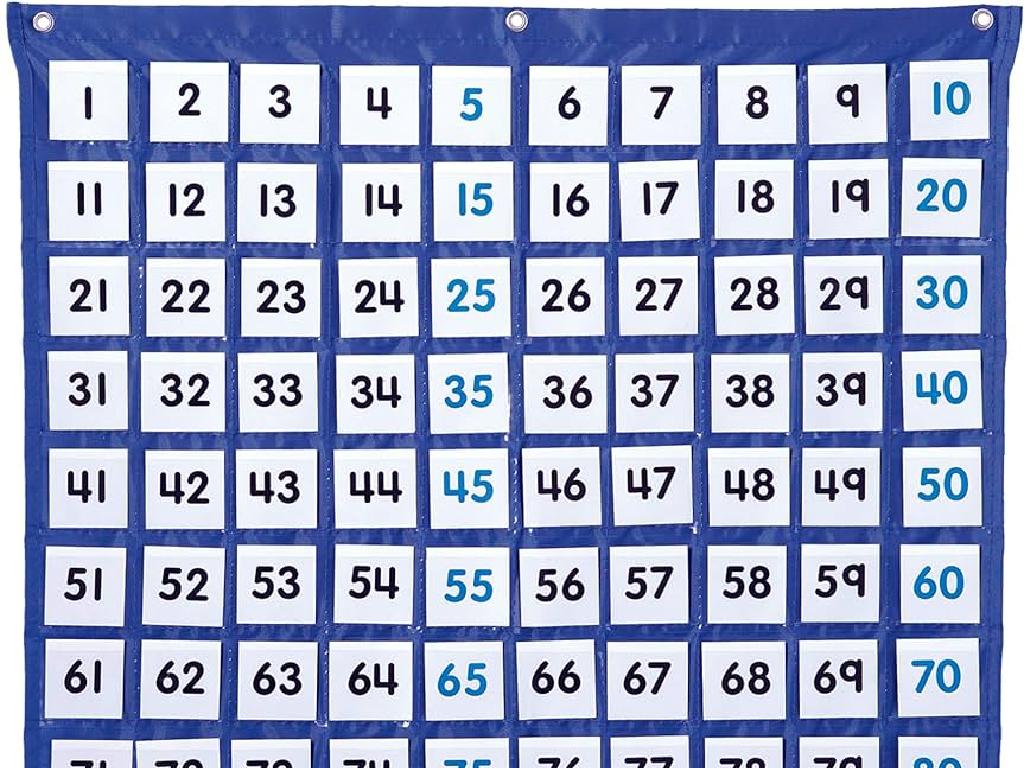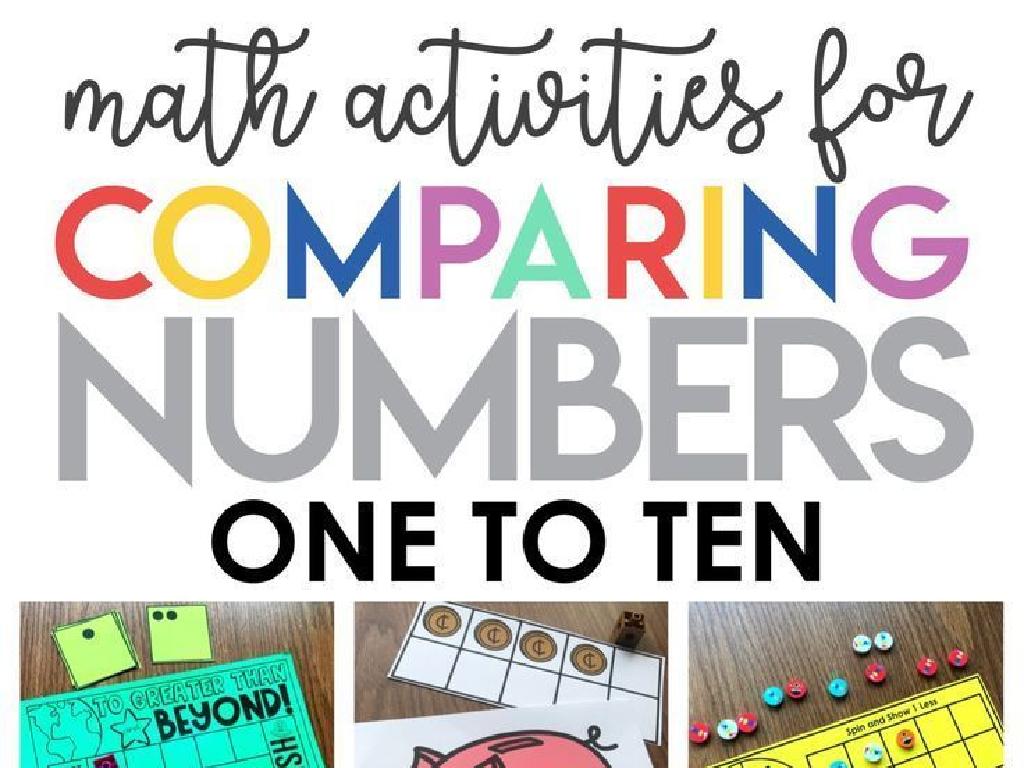Add And Subtract Linear Expressions
Subject: Math
Grade: Eighth grade
Topic: Equivalent Expressions
Please LOG IN to download the presentation. Access is available to registered users only.
View More Content
Combining Like Terms in Algebra
– Understanding algebraic language
– Adding linear expressions
– Combine terms with the same variable, e.g., 3x + 2x = 5x
– Subtracting linear expressions
– Subtract terms with the same variable, e.g., 5x – 2x = 3x
– Simplifying by combining like terms
– Like terms have the same variable and exponent, e.g., 3x and 2x are like terms, but 3x and 3y are not
|
Begin the lesson by ensuring students are comfortable with the language used in algebra, such as terms, coefficients, and constants. Move on to demonstrate how to add and subtract linear expressions by combining like terms. Emphasize that like terms have the same variable raised to the same power. Provide examples and practice problems where students combine like terms to simplify expressions. This foundational skill will help them solve equations and understand more complex algebraic concepts.
Understanding Linear Expressions
– Define linear expressions
– An expression with constants and variables that are raised to the power of one.
– Examples of linear expressions
– For instance, 3x + 2 and 5 – 4y are linear expressions.
– Identify like and unlike terms
– Like terms have the same variable raised to the same power, unlike terms do not.
– Combining like terms
– Add or subtract coefficients of like terms to simplify expressions.
|
This slide introduces the concept of linear expressions, which are fundamental in algebra. A linear expression is a mathematical phrase that can include numbers, variables, and operation symbols, but the variables are not raised to any power other than one. Provide examples of linear expressions to illustrate the concept. Emphasize the importance of identifying like and unlike terms, as this is crucial when adding or subtracting linear expressions. Explain that like terms can be combined by adding or subtracting their coefficients. This slide sets the groundwork for further exploration into operations with linear expressions.
Adding Linear Expressions: Combining Like Terms
– Understand like terms
– Terms with the same variable raised to the same power
– Combine like terms example
– For 3x + 2x, both terms have ‘x’, so we add them to get 5x
– Practice with 5y + 3y
– Add 5y and 3y, which are like terms, to find the sum
– Simplify expressions
|
This slide introduces the concept of combining like terms as a fundamental skill in adding linear expressions. Start by explaining that like terms have the same variable and exponent. Use the example 3x + 2x to show how to combine terms with the same variable. Then, present the practice problem 5y + 3y and guide students to apply the concept by adding the coefficients of y. Encourage students to work through the problem and check their understanding. The goal is for students to become comfortable with simplifying expressions by combining like terms, which is a key step in solving algebraic equations.
Subtracting Linear Expressions
– Understanding negative signs
– Negative signs indicate the opposite direction of positive numbers.
– Example: Subtract 7x from 4x
– Simplify 7x – 4x to find the difference.
– Practice: Subtract 10y from 6y
– Apply subtraction: What is 10y – 6y?
|
This slide focuses on the subtraction of linear expressions and the importance of understanding negative signs. Begin by explaining that a negative sign before a variable indicates the opposite direction on a number line. Use the example 7x – 4x to show how like terms are combined by subtracting their coefficients. For the practice problem, guide students to apply the same principle to subtract 10y from 6y. Encourage students to think of the subtraction sign as an indicator to ‘take away’ from the total amount. This slide will help solidify the concept of combining like terms through subtraction in linear expressions.
Simplifying Complex Expressions
– Combine like terms in expressions
– Example: Simplify 2x + 3y – y + x
– Combine 2x and x to get 3x, then 3y and -y to get 2y
– Practice: Simplify 4a + 3b – 2a – b
– Combine 4a and -2a to get 2a, then 3b and -b to get 2b
|
This slide focuses on teaching students how to simplify complex linear expressions by combining like terms. Start by explaining that like terms have the same variable raised to the same power. In the example provided, show students how to group and add or subtract the coefficients of like terms. For the practice problem, guide students through a similar process, encouraging them to identify and combine like terms independently. This exercise will help solidify their understanding of simplifying expressions, a key skill in algebra. Provide additional examples if time allows and encourage students to explain their thought process.
Real-World Application: Profits and Losses
– Understanding linear expressions
– Significance in real-world problems
– Linear expressions are vital in various fields like economics, engineering, etc.
– Applying knowledge to calculate profits
– Use expressions to determine potential gains or deficits in business scenarios
– Example: A lemonade stand’s earnings
– If 5 lemonades cost x dollars each, and expenses are y dollars, profit is 5x – y
|
This slide aims to show students the practical importance of adding and subtracting linear expressions by applying these concepts to real-world scenarios such as calculating profits and losses in a business. Emphasize that linear expressions are not just abstract math problems but tools that can help in everyday decision-making, such as budgeting or analyzing market trends. The example provided uses a simple business model of a lemonade stand to illustrate how to apply the learned concepts to calculate profits, reinforcing the idea that math is directly applicable to their lives. Encourage students to think of other examples where they could use linear expressions to solve problems.
Expression Workshop: Group Activity
– Create your own expressions
– Simplify the expressions
– Use the distributive property and combine like terms
– Share with the class
– Peer review each other’s work
– Ensure accuracy and understanding
|
This interactive class activity is designed to reinforce the students’ understanding of adding and subtracting linear expressions. Divide the class into small groups and have each group create their own set of linear expressions. They should then work together to simplify these expressions, using skills like the distributive property and combining like terms. After simplifying, each group will present their original and simplified expressions to the class for discussion. Following the presentations, conduct a peer review session where students check each other’s work. This will not only help them learn from their peers but also give them a chance to practice critical evaluation. Provide guidance and support throughout the activity, and be ready to step in if any group needs help. Possible activities for different groups could include creating expressions based on word problems, real-life scenarios, or abstract mathematical concepts.
Homework and Next Steps
– Take home practice problems
– Solve the problems to strengthen skills
– Preview: Multiply & Divide Expressions
– Next lesson will build on addition & subtraction
– Remember: Practice is key!
– Bring questions to next class
– Review your work and note any difficulties
|
This slide is designed to wrap up the current lesson on adding and subtracting linear expressions and to set the stage for the next topic. Distribute the practice problems that cover a range of difficulties to ensure students have ample opportunity to apply what they’ve learned. Give a brief preview of the next lesson, which will involve multiplying and dividing linear expressions, to pique students’ interest. Emphasize the importance of regular practice to master mathematical concepts. Encourage students to attempt all problems and to come prepared with questions or challenges they faced for discussion in the next class.






